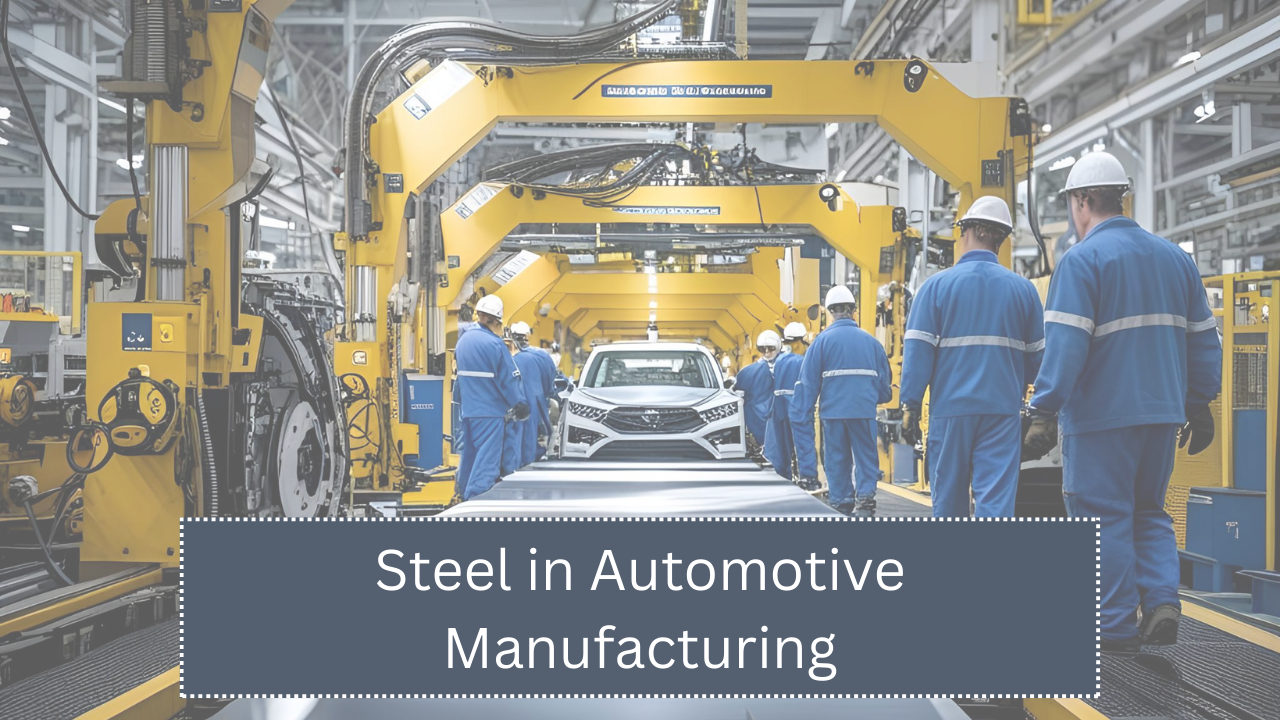Steel plays a major role in modern automotive manufacturing. From car frames to safety systems, steel offers both strength and durability, helping manufacturers build vehicles that are safe, cost-effective, and long-lasting. As vehicle technology evolves, the use of advanced steel types continues to grow, balancing performance with sustainability.
Why Steel is Crucial in Car Manufacturing
Steel has been used in automobiles for over a century. It is chosen for its strength, flexibility, low cost, and recyclability. Today’s cars are made with different types of steel, including advanced high-strength steel (AHSS), which enhances safety and fuel efficiency.
Key Reasons for Using Steel in Vehicles
| Factor | Explanation |
|---|---|
| Strength | Steel can absorb heavy impacts, which improves crash safety. |
| Durability | It resists wear and tear, lasting many years under tough conditions. |
| Cost-Effectiveness | Steel is cheaper than many lightweight materials like aluminum or carbon fiber. |
| Recyclability | Up to 90% of steel used in cars can be recycled, making it eco-friendly. |
| Manufacturability | Steel is easy to shape, weld, and mold into different parts. |
Types of Steel Used in Automotive Manufacturing
Different parts of a vehicle need different types of steel. Automakers select steel based on its mechanical properties, such as tensile strength, elasticity, and toughness.
| Type of Steel | Common Uses |
|---|---|
| Mild Steel | Body panels, doors, and roofs |
| High-Strength Steel (HSS) | Structural parts like chassis and frames |
| Advanced High-Strength Steel (AHSS) | Crash zones, reinforcements, and safety cages |
| Ultra High-Strength Steel (UHSS) | Pillars, bumpers, and critical load-bearing areas |
| Stainless Steel | Exhaust systems, trims, and some engine components |
Steel’s Role in Vehicle Safety
Safety is one of the top priorities in automotive design. Steel contributes significantly to a car’s ability to protect passengers during accidents.
- Crash Zones: AHSS is used in crumple zones to absorb energy during collisions.
- Passenger Cage: Strong steel frames form a rigid cage around the occupants to reduce injury.
- Roof Strength: Reinforced steel roofs prevent collapse during rollovers.
- Side-Impact Bars: High-strength steels protect passengers from side crashes.
Safety Benefits of Steel in Cars
| Steel Application | Safety Function |
|---|---|
| Bumper Beams | Absorb front and rear crash forces |
| Door Reinforcements | Reduce intrusion during side impacts |
| A, B, and C Pillars | Support roof strength and airbag performance |
| Floor Panels | Distribute impact energy and protect battery units in electric vehicles |
| Crash Absorbing Structures | Minimize injury by deforming in controlled ways |
Steel and Lightweighting
Automakers are under pressure to produce fuel-efficient vehicles. Lightweighting is a technique where components are made lighter to reduce fuel use. Although steel is heavier than materials like aluminum, AHSS allows thinner parts to be used without losing strength.
- Reduced Weight: AHSS can reduce vehicle body weight by up to 25%.
- Better Fuel Economy: Lighter cars use less fuel and emit fewer pollutants.
- Structural Integrity: Despite reduced weight, steel parts still meet safety regulations.
Electric Vehicles (EVs) and Steel
Steel is just as important in EVs as it is in traditional vehicles. Batteries, electric motors, and control systems all require protection.
- Battery Protection: Steel enclosures protect EV batteries from external impacts.
- Fire Resistance: Steel parts are less likely to catch fire, improving passenger safety.
- Structural Support: The extra weight of batteries requires strong underbody structures.
Steel Uses in Electric Vehicles
| Steel Component | EV Function |
|---|---|
| Battery Housing | Protects from impacts and heat |
| Floor Reinforcement | Supports heavy battery packs |
| Motor Mounts | Holds electric motors securely |
| Crash Structures | Protect delicate electronics and energy systems |
Innovations in Automotive Steel
Research in metallurgy has led to newer, stronger, and lighter steels. These advanced materials help manufacturers meet government safety and emission rules without raising costs.
- Third-Generation AHSS: Combines strength, ductility, and weldability.
- Press Hardened Steel (PHS): Hardens during manufacturing to create ultra-strong parts.
- Tailor-Welded Blanks (TWB): Mix different steels in one part to optimize performance.
Environmental Impact and Recycling
Steel is one of the most recycled materials in the world. The automotive industry benefits from steel’s recyclability, reducing its environmental footprint.
- Recyclable Content: Nearly every steel part can be reused.
- Energy Savings: Recycling steel uses 74% less energy than making new steel.
- Lower Emissions: Reduced need for raw materials helps cut CO2 emissions.
Comparison: Steel vs. Other Automotive Materials
| Material | Strength | Weight | Cost | Recyclability | Main Uses |
|---|---|---|---|---|---|
| Steel | High | Medium | Low | High | Frames, doors, safety cages |
| Aluminum | Medium | Low | High | Medium | Hoods, fenders, some body panels |
| Carbon Fiber | Very High | Very Low | Very High | Low | High-end performance car bodies |
| Plastics | Low | Very Low | Medium | Low | Interiors, trims, dashboards |
Global Use and Market Trends
Automotive steel consumption is growing, especially in emerging markets. As car ownership increases, steel demand remains strong due to its affordability and reliability.
- Asia-Pacific: Highest usage due to mass car production in India, China, and Japan.
- Europe: Focuses on green vehicles using lightweight steel.
- North America: Invests in steel innovation for trucks and SUVs.
Future of Steel in Automotive Manufacturing
Steel will remain central to car design in the future. Even with advancements in composites and aluminum, steel’s balance of safety, cost, and sustainability makes it a top choice.
- Autonomous Cars: Steel will protect sensitive sensors and computer systems.
- Electric Mobility: Strong steel frames will support batteries and prevent fire risks.
- Sustainability Goals: Steel’s recyclability will help automakers reduce carbon footprints.
The Bottom Line
Steel continues to shape the future of car manufacturing by offering unmatched strength, safety, and versatility. From traditional sedans to next-generation EVs, steel remains a material of choice for automotive engineers. As demand for safer, greener, and more affordable vehicles grows, steel will play a critical role in meeting global needs.

